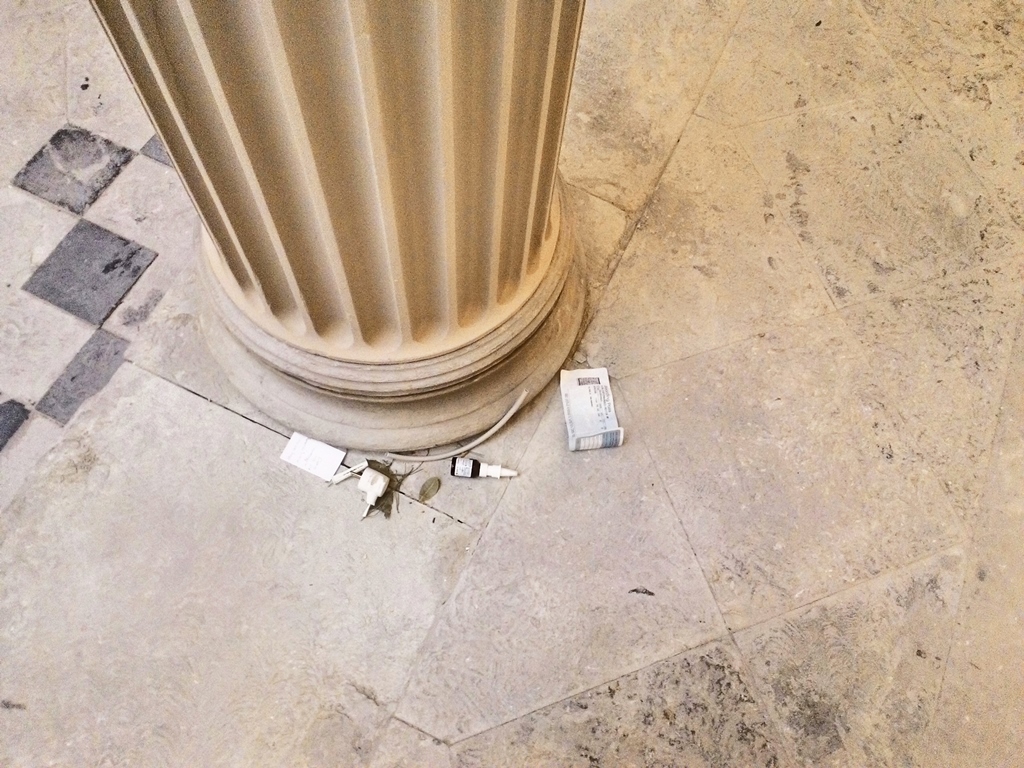
Jason Dodge, What the living do, The Oratory
‘Why don’t we do these things anymore?’ Liverpool Biennial 2016
Spread over wenty locations the Liverpool Biennial shows once again to be one of the more socially engaged biennales in the world.
At the 75 Renshaw Street in Liverpool, in the vicinity of the main city center and many of the biennial venues, can be found the “69A”. Mentioned in all independent city guides this store is more than a second-hand shop. Established in 1976 it is a paradise of treasures for vintage hunters and antique dealers, where old books about ancient cultures and African artifacts are placed next to an impressive collection of Levi’s 501 jeans and plastic telephones from the 1980s. Each item is carefully chosen and unique, they create together a coherent collection of curiosities.
This place transforms you to a different world while being still in the same space-time continuum. Although the shop has nothing to do with contemporary art world (maybe beside the fact that is often visited by artists), after seeing the 9th Liverpool Biennial it appears to me as an essence of its atmosphere.
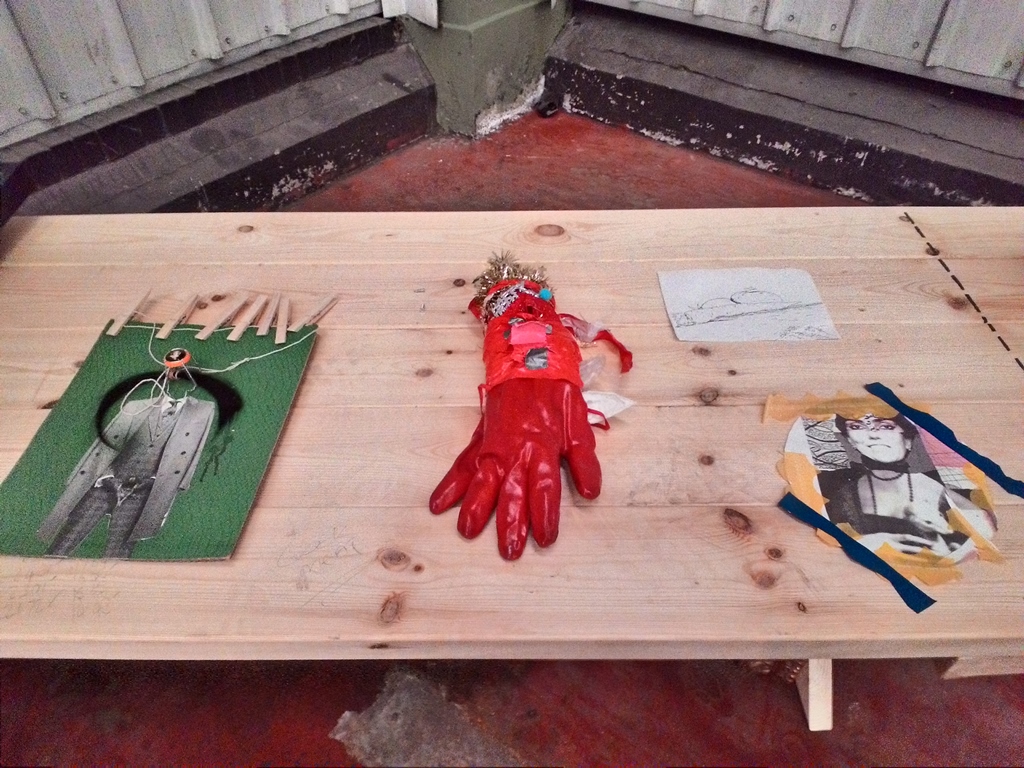

This year’s edition is fourteen weeks of exploring “fictions, stories and histories, taking viewers on a series of voyages through time and space, drawing on Liverpool’s past, present and future”, as presented by the biennial director Sally Tallant. The fiction begun much before the exhibition opened to the public. In order to be able to work together on its creation the curatorial team (including Sally Tallant, Dominic Willsdon, Francesco Manacorda, Raimundas Malašauskas, Joasia Krysa, Rosie Cooper, Polly Brannan, Francesca Bertolotti-Bailey, Ying Tan, Sandeep Parmar, and Steven Gairns) had to take on a form of an homogenous organism and it functions as one, by means of conversation, exchange and compromises.
As a result, the biennial touches upon six merging thematic episodes: Ancient Greece, Chinatown, Children’s Episode, Software, Monuments from the Future and Flashback. These chapters reflect the multi-layered structure of the city, where – depicting vividly and literally – neoclassical Black-E theater stands by the Chinese arch. In front of it Hondo Chinese Supermarket serves as a harbor for works by Ian Cheng and Lu Pingyuan. On the corner of the street, Mr Chilli Restaurant displays Elena Narbutaite’s images of designed with Eduardo Costa tigers swimming suits, and few blocks away another restaurant – Master Chef – presents Ana Jotta’s paintings inspired by the venue.
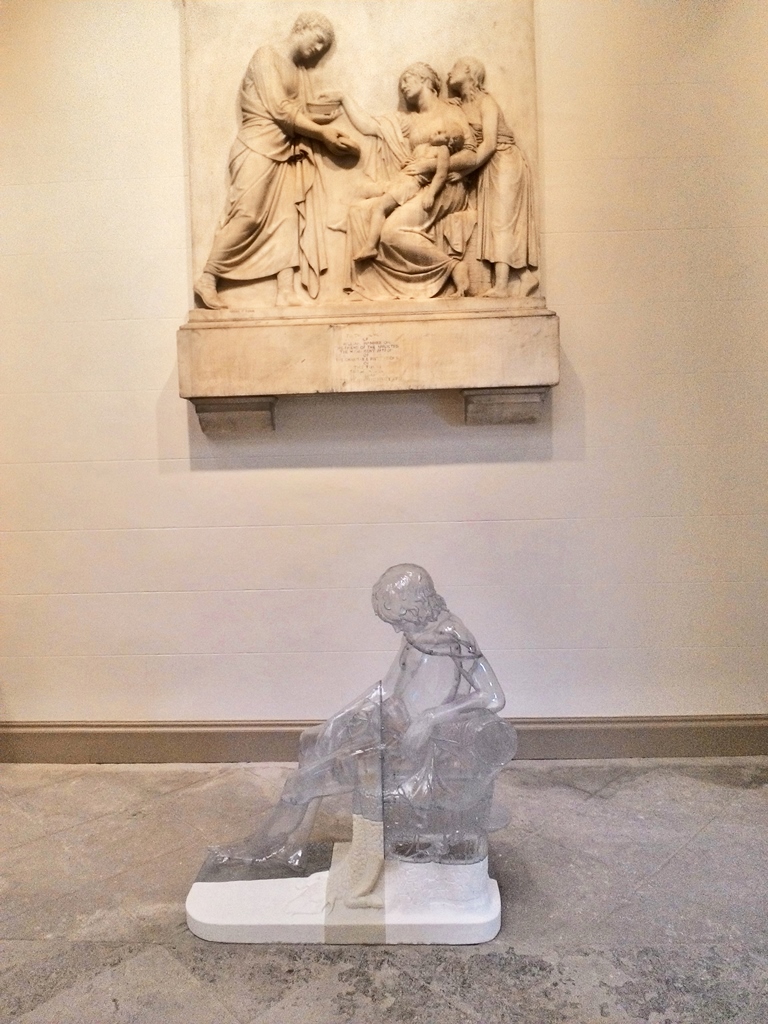
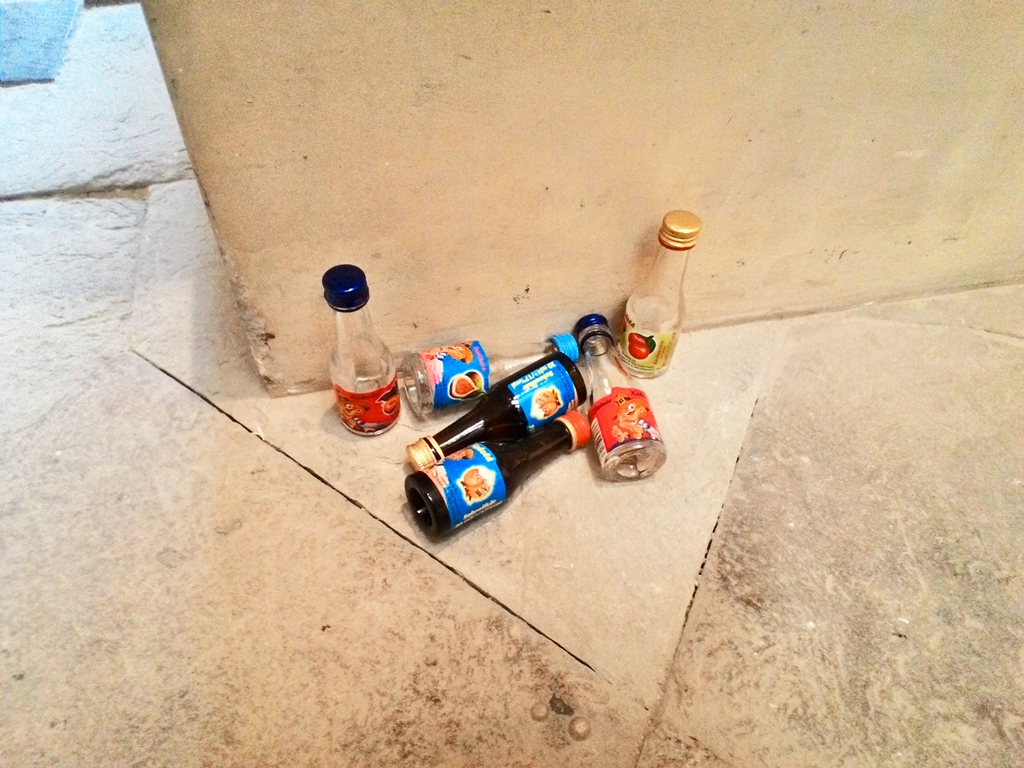
Several artists present more than one work at one place (Rita McBride’s minimal sculptures, Lara Favaretto’s suitcases, Jason Dodge’s “litters”, Samson Kabalu’s slides, to mention just a few), which generates the impression of déjà vu and make you doubt ‘whether I have already seen it’. Multiple stories emerge and exist parallel to each other, and by building up fiction on top of the historical reality create at some extend its allegory.
Back entrance to one of the main venues Cains Brewery leads directly through the vintage shop. Experiencing the biennial exhibition is a process. Historical references mingle with memories of yesterday’s morning. And as during every vintage haul you need to dig into many items to find the gems. One of them is definitely Mark Leckey’s film Dream English Kid – a compilation of archival footages and recorded material that recreate a significant events from artist’s life from the 1970s to 1990s, including the Joy Division’s gag that Leckey attended as teenager in Liverpool. After the projection my friend asked: “Why don’t we do these things anymore?”

Art works and event at the festival blend easily with the city. Very strongly rooted in the socio-cultural aspects of the Liverpool they not only inhabit its properties but reflect on the surrounding context. They behave rather as its extension than the creations of entirely new formations. Nevertheless, the biennial is a fictional organism dispersed throughout the Liverpool and might be seen by its inhabitants as weird hallucination.
The most powerful to me appeared the off-the-center episode of Museum of the Future, where especially worth to mention are works by Rita McBride, Lara Favaretto, and Alisa Baremboym located in the neighborhood of some abandoned houses with the windows painted black, an Islamic cultural center freshly renovated, and Jamaican home food.
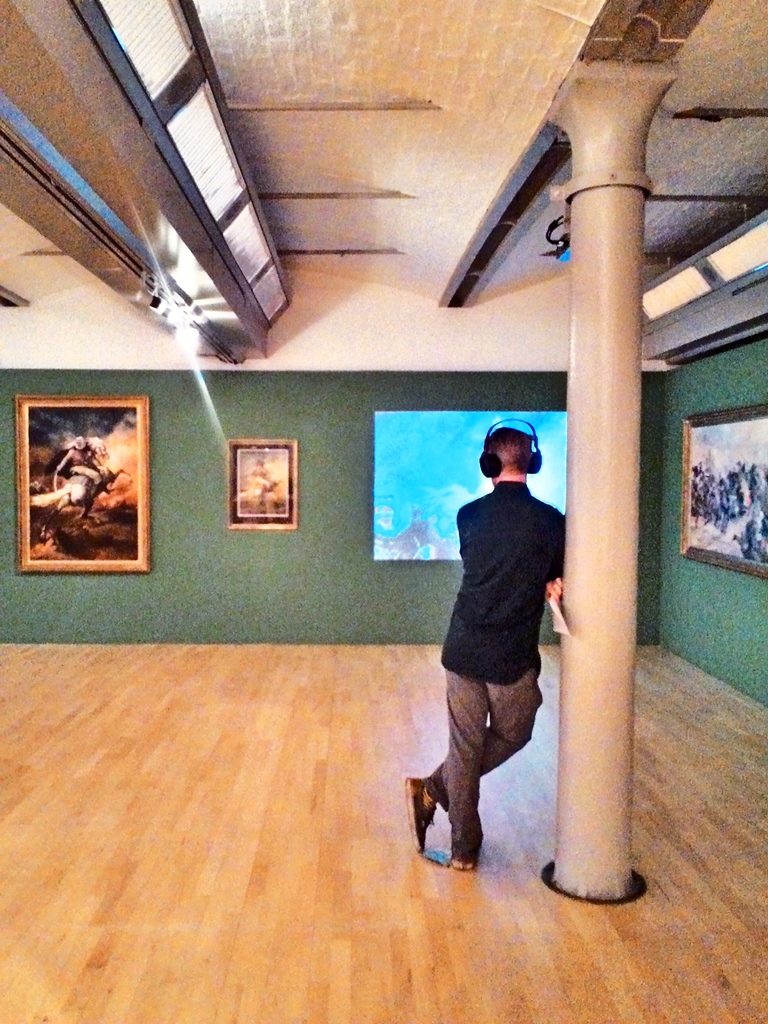
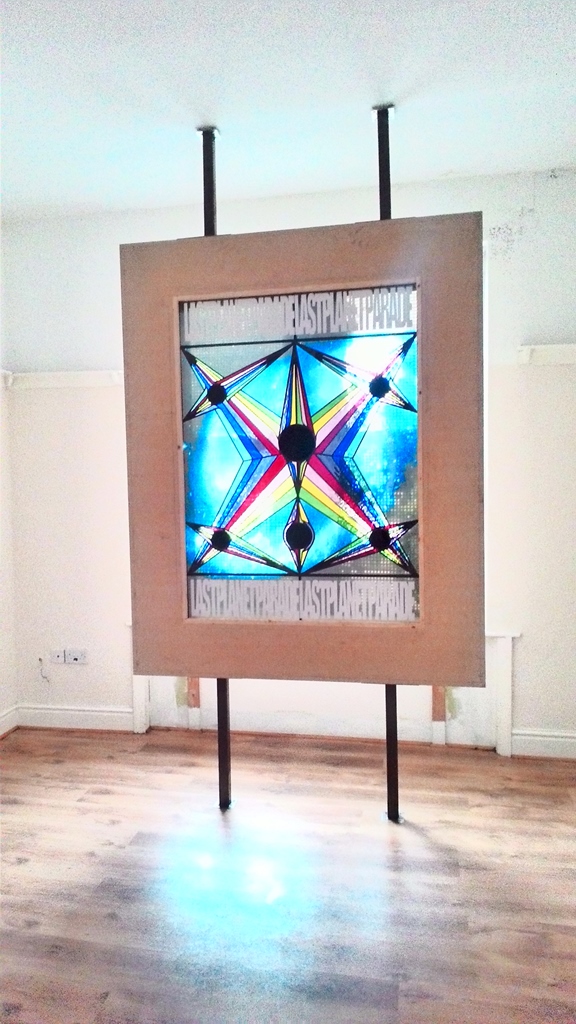
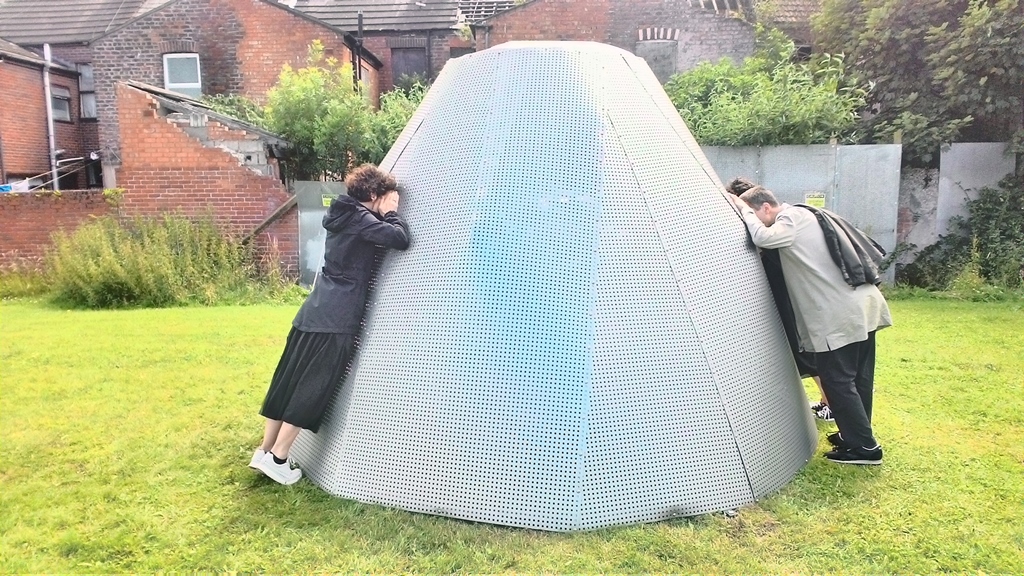
Baremboym’s futuristic shaped sculpture is made from the same metal sheet used to shutter the doors and windows in the area. Inside artist planted the Elephant grass, which could be seen through the perforated holes in the metal surface. This coned shaped object stands on the lawn right next to the Mosque. While I was there to see the work many people made its way towards the Liverpool Muslim Society. The group of art enthusiasts photographing the hybrid form and peeping inside it, accompany by loud mesmerizing sound from the Al Rahma Masjid aroused definitely the curiosity of local community. An unforgettable experience, which proves that one cannot escape the present.
The past has taught us that history repeats itself. We are aware of the experience of our ancestors and using them as they were puzzles to create our own accounts. Consequently, the era that we are living in is compiled by previous generations and cultures that layered upon each other make up so called reality. The biennial appears as a portal to understanding our eclectic origins and times. It is a tale about the present times that have been told to the future generations and the artworks serve there to tell it.
As Krzysztof Wodiczko, one of the participating artists, pointed out – art is like a flashback, a travel through time to interrupt our own reality. Festival unfolds like a novel set up in real time and space but which plot is fictional narrative. Isn’t it after all whole art a creation – and thus fiction – with the ability to transform us to a parallel reality? Even for a while.
Liverpool Biennial 2016
9 July – 16 October
Weronika Trojanska
is an artist and art writer


